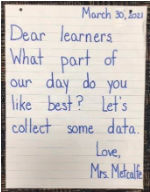
The day I posted this morning message, the room was buzzing. Kids walking in the door were beckoned by those already gathered around the morning message. Snippets of their conversation hung in the air.
“What is that?”
“I think it’s on a phone—my brother ran out of data.”
“Maybe it’s phone power?
It wasn’t until I unveiled the goal for our next math unit that afternoon that the mystery was solved. Because that key word had been on their minds all day, the kids were more than ready to dig into some new learning.
Being able to set the stage for learning that will happen later in the day creates a sense of anticipation and curiosity that can capture the brain’s attention. Being able to front-load a key term or idea or visual helps new things feel a little more familiar when encountered later and may especially benefit language learners. Sometimes a message might ask students to recall something learned before, reactivating knowledge that can be lost if it isn’t periodically pulled back into working memory.
When I want to create a message drawing kids’ attention to meaning-making or content connections, I skim the day’s plans. Is there a vocabulary term we’ll be using? A new content goal I could tease? Is there a skill we haven’t revisited in a while that we could review? The examples below highlight just some of the endless possibilities.
Messages to create anticipation:
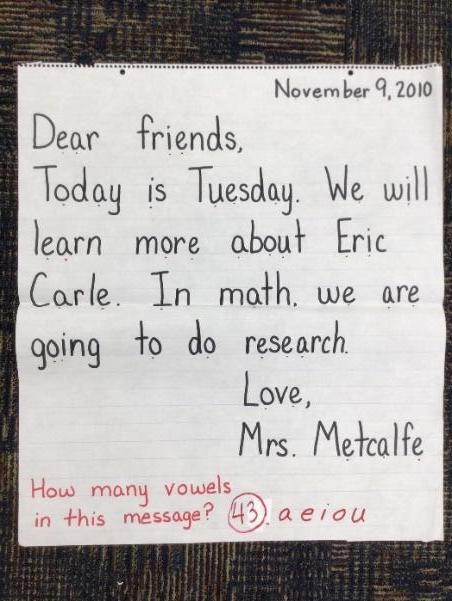
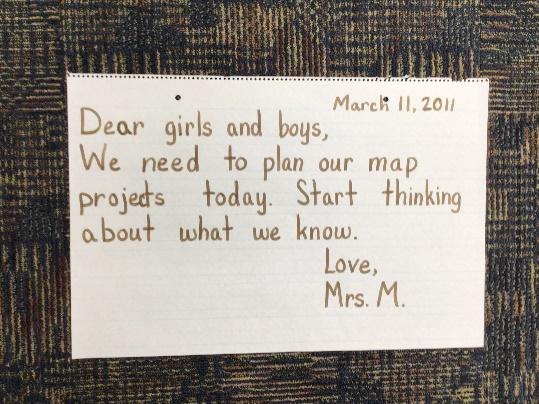
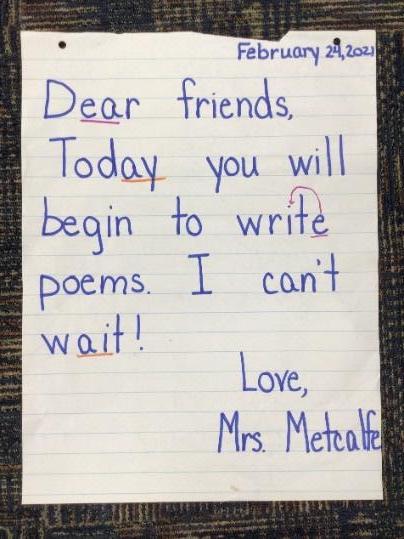
These messages were all about getting kids to start thinking about our learning that day. Sometimes I want them to have a sense of what’s coming in more than one content area. Our conversations often include talk about what we’ve been doing and serve to remind kids of ongoing learning. Other times I use the message to harness energy around something they are already looking forward to, helping direct their excitement in productive ways. In the map project example, I knew the kids felt ready to jump right in and start creating. I wanted to direct some of that energy toward thoughtful creation instead of frenzied crafting.
Messages to front-load or review content:
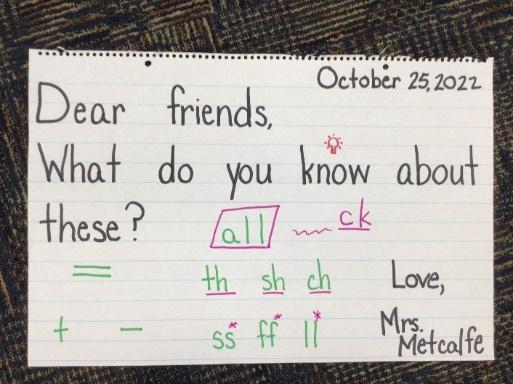
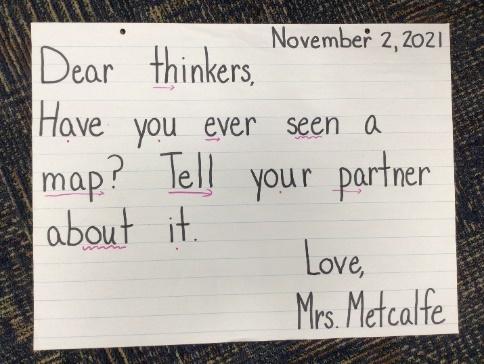
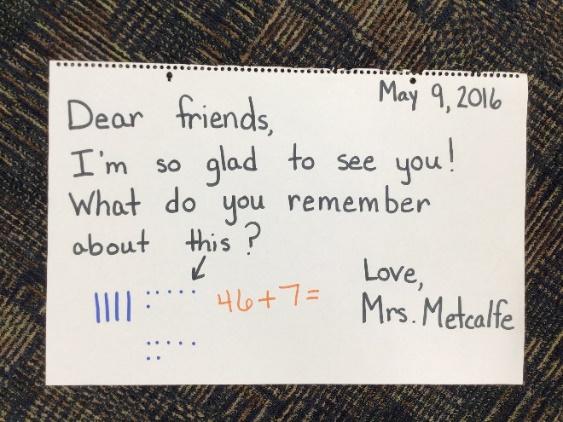
Sometimes there is content that I want to preview before we dig in. This is especially true for concepts I know a group may struggle with at first or if I want to give my English learners (ELs) a chance to hear some language from that content before the formal instruction begins. Other times I use the morning message as an opportunity to quickly review concepts or skills. I know how important it is to periodically do that, and this is one way to build in the habit of making it happen.
Messages to build vocabulary:
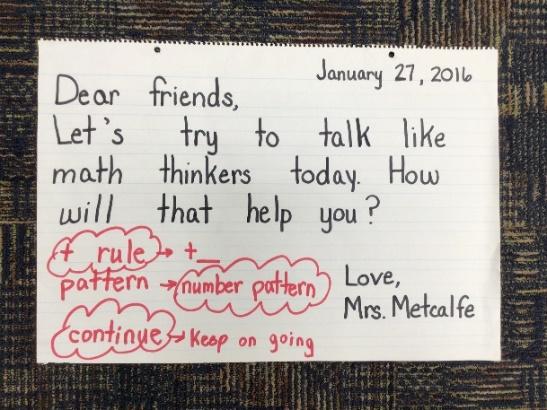
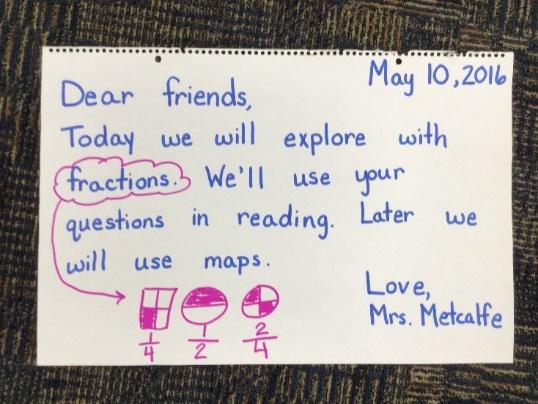
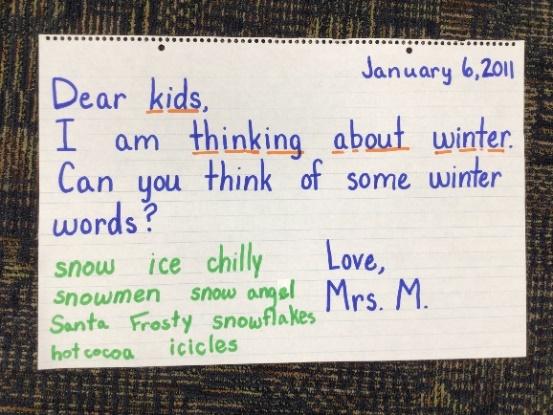
Exposing kids to content vocabulary and providing opportunities to use it is critical, especially for ELs. On days when I include a new term like fractions, kids always ask, “What is that?” That little move puts them in the position of seeking out new learning. Other times I might ask them to name or use some key content vocabulary through whole-group or partner talk. That gives me a quick picture of what vocabulary they seem confident using and what terms are missing from the conversation. Other messages provide opportunities for kids to name things that fit in a certain category, something that is a standard at my grade level.
Messages to promote meaning-making:
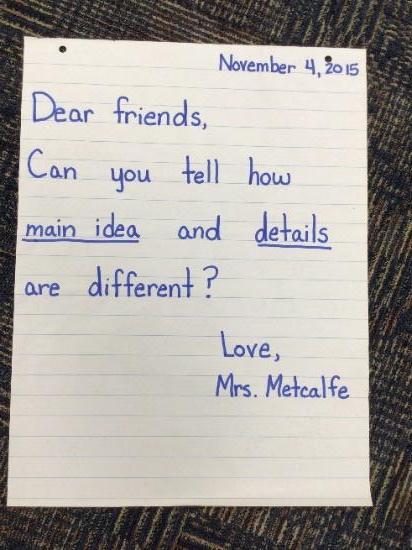
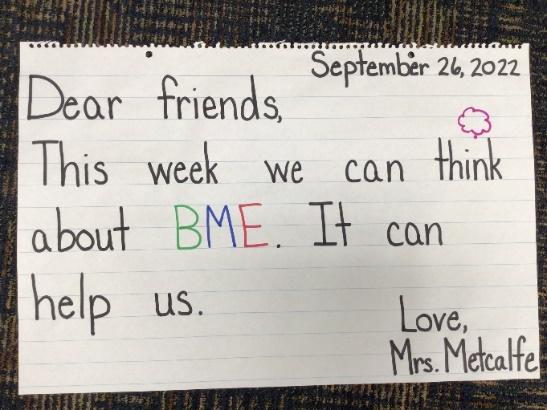
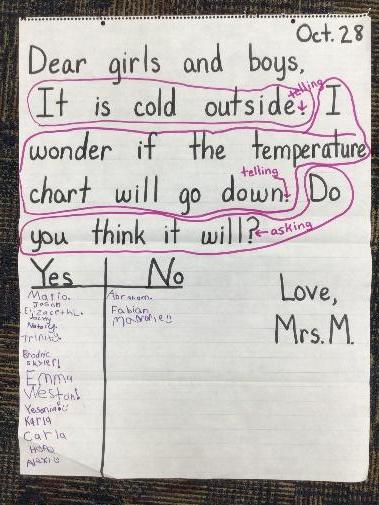
These messages led kids to think about meaning more deeply. Grappling with the difference between main idea and details in morning meeting helped kids better understand the reading work we did later that day. We talked about things like how beginning, middle, and end can help us retell in a way that makes sense, whether we’re retelling someone else’s stories or writing our own. Thinking about how to make predictions during our science unit led to an amazing discussion about why having reasons is important.
Messages to connect across content areas:
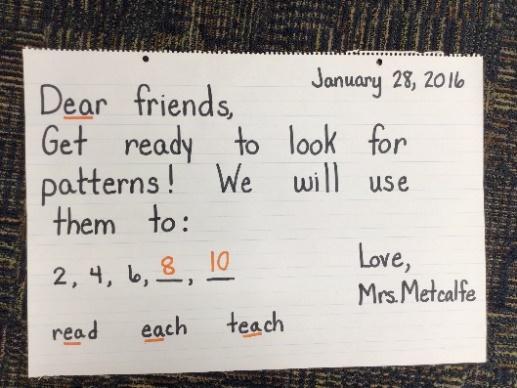
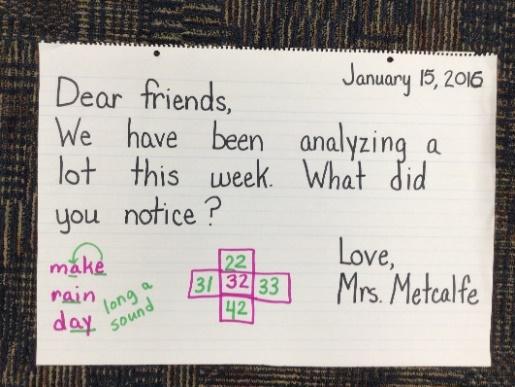
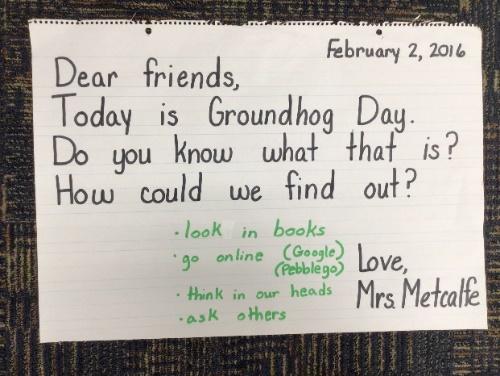
There is so much to learn every day that it can feel overwhelming. Looking for ways that content learning overlaps can help. In the Groundhog Day example, we were using a social studies topic, but linked to our work with reading informational text and to what we were learning in writing about doing research. The other examples were designed to help kids realize they use the same kind of thinking in different content areas. Instead of learning how to think through things in each content area separately, the thinking stays the same, which feels somewhat easier.
No matter how you use morning messages, know that it can have a long-lasting impact on your learners. It’s a small investment—morning message routines can be done in as little as five minutes, and some creative thinking can find those minutes somewhere in your day. Going beyond building a sense of community or word study application unlocks a wide range of opportunities to support learning in any content area. And if you need reassurance that your morning message routine makes a difference for kids, know this. At least a couple of times a week former students stop by my room to say hello before heading off to class. Almost every time they want to know if I still do the morning message (yep!) or where the message is (changed rooms; needed a new spot) or if they can read the message before they go (of course!). That’s all the evidence I need to know that making time for this routine matters, and if it matters to them, it matters to me.



